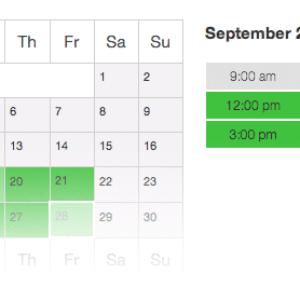One of the best stock agencies I deal with, the UK outfit Alamy, is well-known for their meticulous standards, and I totally respect that meticulousness. Still, there is one particular part of the Alamy submission process that’s error-prone and resistant to automation, and that is the seemingly trivial matter of image sizing. Due to the amount of misinformation out there on the subject, I thought I’d take a crack on explaining what it is they want, and how you can reliably make sure you meet those specs.
First, what size does Alamy actually want? What they say is:
Uncompressed file sizes of more than 48MB, we recommend that you do not interpolate your files to more than 55MB. This means you should make your JPEG file from an 8 bit TIFF file that is at least 48MB.
Let’s take this apart. When they say “Uncompressed file”, they mean an 8-bit TIFF file. While Alamy requires that you upload in a compressed format, their sizing requirements are based on size of an uncompressed, 8-bit TIFF file of the image, even if you never make one. If your workflow doesn’t involve TIFF intermediates, this may seem challenging, but it’s not intractable. The requirement is almost equivalent to saying that they want 16 megapixels in your image.
Almost. See, we have a language problem with “mega”. In nearly every common and scientific usage, “mega” usually refers to 1,000,000. In computer usage, however, it sometimes means that, and it sometimes 1,048,576. Alamy means the larger of the two. If you save your 8-bit TIFF file to disk, and see a fifty-million byte file there you will be surprised and annoyed to discover that your file is less than 48 megabytes (in the larger sense of the word megabyte) a few days later when your submission is rejected.
Now let’s turn to various advice that has been given to accomplish this. In this post, Alamy has a suggested “ideal workflow” which says in part:
In an image editing program such as Photoshop, upsize the image to a minimum of 48MB. (If you make your longest side 5200 pixels and keep it in proportion to the shortest size, this should give you a file size of just over 50MB)
This will work for a lot of photographers in a lot of circumstances, and advice like this is repeated elsewhere , but this advice is sometimes wrong. It contains an unspoken assumption that the aspect ratio of your image is 3:2. If your image is narrower than this by even seven percent (less for the folks who suggest 5128, rather than 5200 pixels)–something that can easily happen with cropping or in processing panoramic images–your image will be rejected (as will as every other image you have waiting). So it’s imperative that you not take this advice blindly.
If you do use Photoshop, it will give you a file size in the lower-left corner, and that can be displayed in MB (the right MBs), but those numbers are only valid if you’ve already checked that you have an 8-bit RGB or LAB file without additional layers, they’ll mislead you otherwise. I’d also guess that number would be wrong if you used CS4’s non-destructive crop. And, of course, you may not be preparing your files using Photoshop, Lightroom has no such facilities.
I know of no plug-in, tool or action that will consistently resize an image in Photoshop or Lightroom that will reliably generate a file above 48 megabytes (more accurately, 48 mebibytes), without enlarging squarer images far beyond necessity.
So, I usually do the 5200 resize, save for images that I notice are significantly cropped for 3:2, and then use automation to check the result to make this process more reliable. There is a tool, available for Windows and Mac OS X, that will verify the size of files (based on the JPEGs you’ll actually send Alamy!) before you upload them. It’s called Alamy SizeCheck, it’s donationware, and it’s my new best friend. If you’ve gotten caught by sizing problems with Alamy, this may be just the thing you’re looking for.

Petrus
22 Aug 2009Thanks for the article, Joe. I’m experiencing some issues with upsizing for Alamy and out article is really useful. Especially the link to Alamy Sizecheck.
Joe Decker
23 Aug 2009Petrus: Thanks. Yeah, before writing this I had just blew two consecutive uploads to Alamy (one for sizing, one out of what can only be explained as a different stupid mistake on my part), and so I’m quite focused right now on making sure that future uploads are spot-on perfect *before* I send ’em, it’s embarrassing (and slows things down a lot).
Sparr
29 Aug 2009I find it hilarious that a stock photography website expects photographers to scale *UP* their photos prior to submission. As both a photographer and purchaser of stock photograph this seems ridiculous. From both positions I would point out that with any but but non-resampled upscaling (which defeats the purpose) you guarantee loss of quality during future downscaling. And as a purchaser I find this a quite negative “feature”, as it makes it impossible for me to discern between shots taken at any resolution below 16MP.
I have never dealt with Alamy in the past, and now am almost certain that I never will.
Fred Troilo
30 Aug 2009Nice article Joe – I’ve pretty much given up on Alamy but I may give it another shot and follow your suggestions. It’s just a very cumbersome process that got me very frustrated. Fred
Joe Decker
31 Aug 2009Fred: You are totally not alone. 🙂